Whether aboard a cruising sailboat or in our Lance 1685 travel trailer, it seems like almost everyone, including us, underestimates the amount of electricity we use, especially when planning alternative energy. Determining RV amp usage can be very frustrating when your goal is to live by the sun and not have to run the generator!
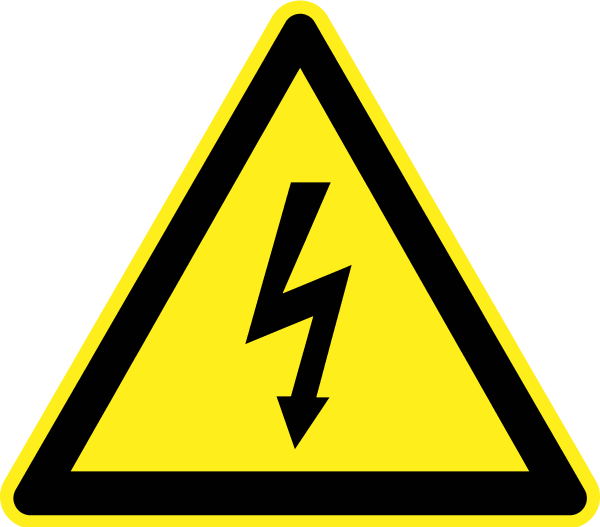 DISCLAIMER: I am NOT an electronics guru – I don’t really understand much more than basic principles.
DISCLAIMER: I am NOT an electronics guru – I don’t really understand much more than basic principles.
Hopefully, this will help you think about your alternative energy needs BEFORE you go boondocking or dry camping and your furnace won’t run at 4 AM when its 24 degrees outside because you underestimated how many amps the furnace blower takes (or, like us, didn’t even realize the propane furnace needs electricity for the blower to function).
Before you can start to plan, you need an idea of how many amp hours of electricity you use each day. Unfortunately there’s no shortcut easy way to calculate this information — I can’t tell you because it’s vastly different for everyone. There’s no one size fits all equation.
When we started ordered our Lance 1685 (a 20’9″ travel trailer), we added a 2nd battery and upgraded both batteries to Group 27’s. Between the two Group 27 batteries, we have somewhere around 200 amp hours.
Battery manufacturers recommend using 50% of your available battery capacity – so we have 100 available amp hours. Why 50%? I don’t know, the manufacturers say it will extend the life of your batteries – which given the price of deep cycle batteries, we like more years rather than less.
The first step is to calculate how many amps you use daily. To do this, you must go through meticulously and calculate amp usage by hours used. If you don’t know how to calculate amp usage for each individual thing that uses electricity, you’re going to have to be a bit of a sleuth – you need to find the watts and voltage for each light bulb, each appliance and so on. Most packaging will contain the information you need, or often you can look it up online. As an example, look on the bottom of an appliance – here’s our coffeepot.
You can see that it uses 1425 watts and it’s 120 volts. WATTS divided by VOLTAGE = AMPS is the formula.
So 1425 divided by 120 = approximately 12 amp hours PER HOUR. But an individual cup of Keurig coffee doesn’t take an hour, so you have to determine how long each cup takes (approx 3 minutes) and do the math. We each have 2 cups a morning, so 4 cups of coffee times 3 minutes per cup = 12 minutes of Keurig Coffee Maker use daily. Let’s round it up to be safe and assume we use about a quarter of an hour of coffee amps per day or 3 amps.
THE INVERTER FACTOR
HOWEVER, it’s not this simple — of course not! Not 3 amps but SIX amps/day if we used an inverter.
All inverters are different, but ALL inverters waste power. To simplify a really complicated equation of how much power is wasted converting DC to AC, I just use a “wasted” ratio of 2-1 — i.e. it takes twice as many DC amps to power AC through the inverter. I automatically double the amps used for anything that requires an inverter.
In the travel trailer, we simply don’t use the Keurig when we’re dry camping or boondocking. A teapot and Melita Filter, plus a good insulated carafe replace it and require zero amps.
However, the coffeemaker isn’t the only thing in the trailer that uses AMPS and some of them require A/C 120v current. We try to use 12V converters as much as possible – I use one to charge my Apple MacBook Air. Why spend the money for 12V converters when you could just use an inverter and plug in as usual? I guess it just depends on how much stuff you need to power with 120 AC and how much you can innovate around needing it. Whatever you do, keep in mind, if you’re trying to power a 1425 watt Keurig coffee maker, you’ll need a really big inverter! Ours on the boat is 1700 watts and will grudgingly make us coffee in the mornings, but we have 600+ amps in our battery bank on the boat, the trailer has 200.
How Many Amps Per Hour?
Here’s our starting point. You’ll need to make your own list. Note that you need to know amps per hour and an estimate of how many hours you use the item to calculate daily amp usage. Luckily, the travel trailer has propane refrigeration and a propane water heater (when not connected to electricity) – two of the biggest amp burners aboard our sailboat are propane in the trailer! BIG help when it comes to electrical consumption.
LED Interior Lights: avg 3 lights on for 3 hours each = .20 amps/hour X 9 = 2 amps/day (gotta LOVE those Lance LED lights inside! Beware! Without LED lightbulbs, amps will skyrocket!)
CO2 Sensor Alarm: ??? Minimal but I can’t find the data.
Water Pump: between 2.8 – 6.1 amps depending on pressure used – if we assume 4 amps/hour as an average and we use the water pressure for a total of 25-30 minutes with showers = 2 amps/day
Jensen Radio: 3.3 amps/hour: on for 2 hours/day = 7 amps/day
Coffee Pot: 4 cups of coffee – see math above = 6 amps (3 amps X 2 with the inverter)
Fantastic Fans: “Less than 3 amps/hour on high” – if it’s hot we leave our fan on 24 hours, because the thermostat control cycles on and off. So guessing somewhere between 4-8 hours out of 24 = 11 – 22 amps/day if in use
Bathroom Vent Fan: 1.2 amps/hour on for 1 hour/day = 1.2 amps
Jensen 12v TV: 3.3 amps/hour: 2 hours of TV = 6.6 amps
TV Antenna: .1 amp/hour: 2 hours of TV = .2 amps
Wineguard G2 Dish & DirecTV Receiver (requires an inverter): .5 amps for receiver plus 5 amps for satellite = approx 6.5 amps/hour X 2 hours a night = 13 amps
Laptop Computer: 2 hours/day 5 amps/hour = 10 amps (using my 12V charger cord)
Charging Stuff (from phones to drills to cordless vacuum etc): 5 – 10 amps/day average (using the small inverter)
So you can see with just the basic daily electricity, we average around 80+ amps a day and our Group 27 battery bank at 50% is 100 amps. So each day, we use up a large percentage our available amps – and that’s without needing the furnace. Without recharging daily we’ll either drain and kill the batteries or be freezing at 4 AM when the battery voltage is too low to power the furnace blower. On the other hand, if we just read good books or play scrabble and don’t include TV or radio, we can cut our daily amp consumption significantly – and if I don’t use my MacBook Air and play with my photos, we can reduce it even more! 🙂
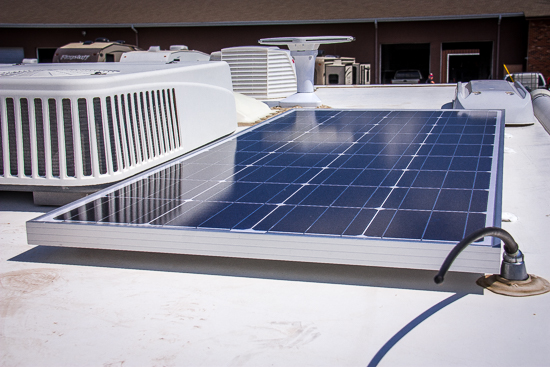
NEW SOLAR! 160 watts of GoPower from Lance installed by Middleton RV. Working great! Love the “free” power!
So we added a 160 watt GoPower solar panel and controller.
Although it’s not up to an engineers standard, my easy rule of thumb is 1 amp hour of electricity from every 15 watts of solar, our single 160 watt solar panel can generate up to 11 amp hours. But on a perfect sunny day with the trailer in no shade, there are maybe 4 total hours when we generate max amps – so 10 amps X 4 hours = 40 amps. And an additional 5 hours of daylight where we’ll generate increasing and then decreasing percentages that I’m guesstimating at another 20 amps for the day. That’s a total of 60 amps on a perfect sunny day with our current solar.
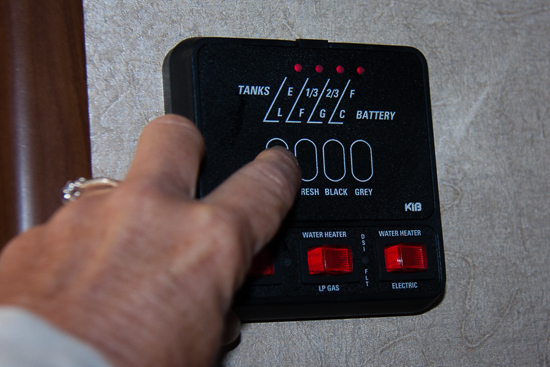
Ugh, the dummy-meter. In the sailboat we have a Link 10 that shows us exactly what our voltage is and how much is going in & coming out at any given time. But for now, we’ll stick with the dummy-lights.
Bottom line, depending on sun for the solar, we can go about 3 days without having to use our Honda 2000 portable generator to recharge our 2 Group 27 wet cell batteries.
Other Stuff Not Daily:
Furnace Blower: 4.6 amp hours per hour X 4 hours on a chilly night = 18.4 amps (or 46 amps if it runs 10 hrs)
A/C: 12-17 amps
Converter: 2-3 amps
Microwave: 7.5-13 amps – can’t use the microwave unless plugged in or the Honda 2000 generator is running
VCR/DVD Player: 1 – 1.5 amps
Atwood Power Jack MPD87083: up to 30 amps/hour X 5 minutes used = 2.5 amps
I hope this is a good starting point for you to develop your own energy plan for your adventures. It’s certainly an eye opener to know how many amps it costs to listen to a little Zac Brown Band on the radio during happy hour! 🙂
Anyone with other items to add to the list, please leave a comment and share – we’ll all benefit from knowing how many amps different common household items use! And if I’m completely crazy and don’t know what I’m saying, please leave a comment (or send me a e-mail) so I can get this right! I think it’s pretty close from our 15 years experience living on the sailboat. 🙂 Cheers! Jan

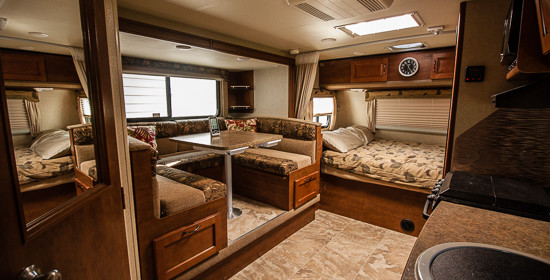
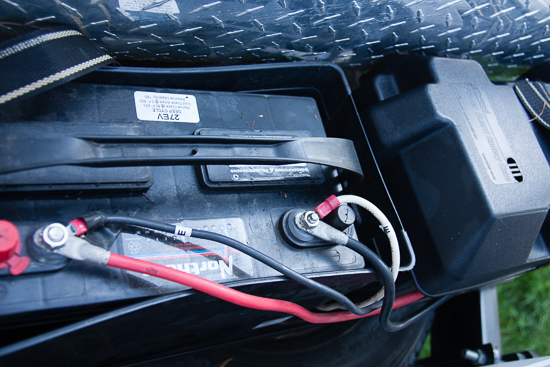
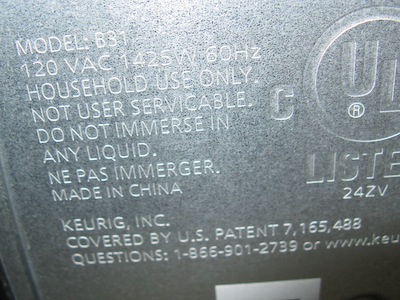
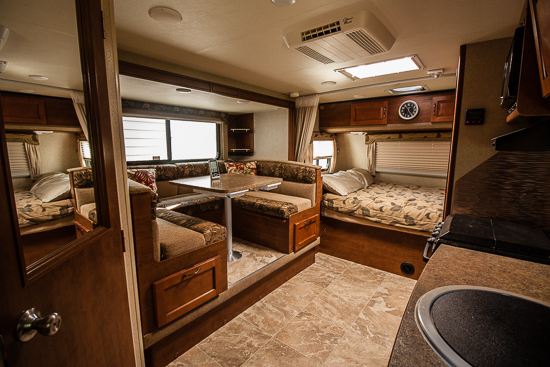
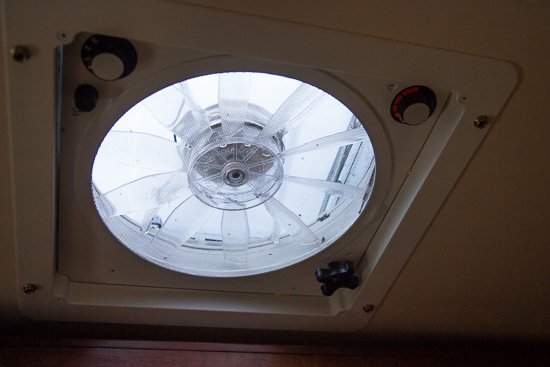

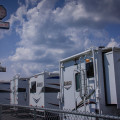



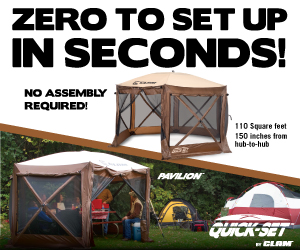
36 Comments
When you say “amps per hour” I think you mean “amp hours”. Amps is a measure of current. Amp-hours is a measure of energy, but “amps per hour” doesn’t make sense. That is, dividing current by time does not produce any meaningful metric.
When you say this:
3.3 amps/hour: on for 2 hours/day = 7 amps/day
What you probably mean is this:
2.2 amps. On for 2 hours/day = 7 amp-hours/day.
Consider that the Amp, a measure of current, already ha the “per hour” built into it. It’s a measure of the number of Coulombs of charge, passing a certain point per unit of time. That’s why it doesn’t make sense to say “amps per hour”. But when you multiply by time, you remove the “per time” part of it, and you just measure energy (in Watts) without saying how much time elapsed to produce that energy.
Very useful info! This will be a huge help for me just getting started. Thanks! One thing I need clarified though. If you use about 80 amps a day and your solar generates 60 amps, that gives you a net usage of 20 amps/day. With 100 amps available in your bank, wouldn’t that allow for 5 days of boondocking, rather than 3? Or were you just being cautiously conservative?
Thank you for helpful post.
This information is what i was looking for.
This is the best. Thank you for putting it in normal people wording.
Do you mind if I quote a few of your posts as long as I provide
credit and sources back to your webpage? My blog site is in the exact same area of interest as
yours and my users would definitely benefit from a lot of the information you present here.
Please let me know if this ok with you. Thank you!
Hi Rich! I’d like to see your blog before approving. Please send me a link to your blog & I’ll let you know if it’s OK. As this is all my own content, I usually don’t approve it being quoted but if it’s appropriate and attributed beneficially, I might. Please reply and let me know. Cheers! Jan
Excellent blog post. I certainly love this
website. Continue the good work!
33 ‘Prowler Toy Hauler, with one slide out. 6700 lbs with tongue weight at 1300 lbs, so, it takes forever to raise this much weight off the ball. How many amps each usage?
I have a 33’8″ Crossroads Cruise I think it’s about the same weight. My electric motor is attached to my battery bank of 440 amp/hours. It seem to pull extremely hard when its cold out and less when its warm out. It’s around 125 amp draw on the batteries. I only run my motors for about 1 minute or less to keep from over heating the motor. The wait about 3 minutes to finish the job of setting up the rv after it’s unhooked. According to the conversion table if it draws 1500 watts devided by 12 volts, it is averaging 125 amps per one minute draw on the batteries. That’s a lot of heat to the motor. That’s why I only run it at 1 minute under a load, and 3 minutes of rest to cool of the motor.
Thanks for the informative article! I was wondering if you could provide a link to the 12V converter you use for charging your laptop?
The only caution I would have in your calculations is when you are talking about a 12v appliance versus a 120v appliance. Your coffee brewer stated 1425w @ 120v which translates to roughly 12 amps. But remember that’s at 120volts not 12v. The amps from a battery at 12v is 10 times the amps at 120v so your coffee example would be 30 amps at 12v not 3 amps. The math works for all of the 12volt appliances but you need to normalize your 120v appliances to 12v to get an accurate draw on your batteries. Hope this helps and enjoy the life off grid.
you are correct except that he isn’t running the appliance from 12 volts. he is inverting the 12 volts to 120 volts at 50% efficiency so what would normally be 6 amps on 120 volts will be 12 amps through the inverter.
Ted, I think you are missing what Ken is trying to explain. When connected to an inverter from a 12v battery bank you are using 10 times more amps per appliance. In the example above, a 1425 watt coffee maker uses 119 amps of battery power per hour. On a 100 amp-hour battery bank, if the coffee maker was run continuously you would deplete the 100 amp-hours in 51 minutes. They use the coffee maker 15 minutes per day so they are using 35 amp-hours of the 100 amp-hours available. Also note that you can only use 50% of your stored battery bank power so you would need a battery bank with a capacity of 200 amp-hours to achieve the 100 amp-hour supply i explained in this post.
I have a 18 ft trailer how many Amos do I need when camping 20 30 or 50 and how do I know.. they ask this question when making reservations for camping ..thanks
Hi Luann. No way to know exactly for your trailer. I’m guessing that with an 18′ trailer, you’re 30 amp, could be 20, definitely not 50. Good luck & safe camping! Cheers! Jan
Thank you this has been helpful, I am planning on living in a travel trailer and adding solar your info has been helpful but that being said I love in Calgary Canada and it gets very cold in the winter so I am looking g on cost and how much watts I will need for my solar ….CHEERS pearl
Your trailer has a shoreline plug that gets plugged into the outlet at the RV park. those outlets are either 15amp 30 amp or 50 amp outlets. They are asking how many amps is your trailer. if the plug on your trailer has 4 prongs then it is a 50 amp trailer. If it has a plug that looks like every plug you have ever used in your life then its a 15 amp trailer. If it has three prongs but will not fit in a wall outlet at your house then its a 30 amp trailer.
Hi LuAnn,
Take a picture of your power cord plug-in. The 30amp, 50amp, etc all look differebt. An RV service center can take one look @ your picture and tell you what you’ve got.
I bet tou have 30, but best be sure.
Happy trails, Lorraine from NorCal
Luann, you are confusing the DC amps the article is about with the shore power hookup at the park. Just reserve the site that will meet or exceed the requirements that your trailer is wired for. For example, if the site is has 50Amp connection, you will need an adapter to bring it down to 30Amp or 20Amp to meet your trailer. Conversely, if your trailer is wired for 50Amp, you will need adapters to drop you down to the 30amp or 20amp. Note you will not be able to use many of your AC appliances.
Just want follow up comments. Great info. Easy to understand.
I have two 100 watt solar panels that gives an average of 10 amps per hour of charging. That has been giving me about 60 to 70 amp hours of recharge per day.So fat it has been more than sufficient.
I don’t understand glowing about a solar system that can’t fully recharge your batteries. Nothing you are using is excessive in my view. ADD another panel of two.
Good idea – only question is space. We like them installed and not portable, but we might need to add a couple portable solar panels to add more solar charging. Cheers! Jan
Another thing people often don’t think about with solar is the weight of the panels. If you keep adding panels you might exceed your RV’s weight carrying capacity. This applies to anything you add to the RV, but solar panels is certainly one of them. 🙂
Thanks for the numbers, installed a Lithium battery bank and making a spreadsheet to do some preliminary numbers. Hoping to go three days off two 100AH batteries.
Remember, your 100AH battery will only get you 50 amp hours since you don’t want your battery level to go below 50%. (assuming you are using 2 6 volt deep cycles)
They stated they were using Lithium battery banksk not AGM. That means they can safely go down to 20/30% and not affect the life of the batter. That’s still 160ah from two batteries.
Depending on the brand of LiFePO4 battery, you can actually take them down below 20% to near 0 without affecting the lifespan or performance of the battery. 2-100A Lithiums give you one heck of a lot of useable amps if you are careful with use.
Just want to comment that I use inverters off the vehicle battery to recharge things, rather than using a generator where generators are widely not allowed in many camp grounds. Finally, I am planning on installing a new, more modern way of solarizing my new RV. I am going to use the flexible, thin solar panels and tape them down around the perimeters using the Eternabond tape, rather than making any holes in the rubber roof membrane, and I run my main cord down along side the awning arm. Worst thing to do is to put holes in the roof, and now with these flexible solar panels you can do that.
A problem you may encounter by taping panels to your roof is, HEAT. You will lose efficiency if the panels get too hot.
Hi Mick! Our solar panels on the roof are on brackets to keep them up and off the actual roof. Good FYI for others, so THANKS! So far so good with ours, happy campers, so to speak! 🙂 Cheers! Jan
Take a look at hyour roof. There are a lot of holes! If you do the job correctly with the right materials, a few small holes to mount the solar is not an issue. Sealants like Dicor are 20 year products. Leakage is not an issue.
Wow. Thank you for breaking this down. It is exactly what I was looking for on the internet.
Can,t thank you enough! I have a 1685 that I am going to solarize.
We love solar! Both on the boat and in our 1685! 🙂 Cheers! Jan
i have a 26 foot trailer on which i installed 3 15 w solar panels, i can usually run minimal lights, furnace off one group 24 battery for 3 days